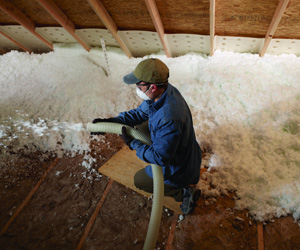Are you tired of battling mold and mildew in your home, especially in Virginia’s humid climate? The struggle is real. From musty odors to visible mold growth, these issues not only affect the aesthetics of your home but also pose health risks, particularly for those with allergies or sensitivities. If you’re wondering why your home seems to be a breeding ground for mold and mildew, the culprit might be hiding right above your head–in your attic.
Why Attic Ventilation Matters in Virginia

In Virginia, where our humid summers and variable weather patterns are the norm, proper attic ventilation is crucial. Without it, heat and moisture can become trapped, creating the perfect environment for mold and mildew and fluctuating temperatures to thrive.
Think of your attic space as the uppermost layer of your home’s defense against the elements. When heat and warm, moist air rise from the lower levels of your home, such as the basement or crawl space, they can become trapped in the attic if not allowed to escape. This is where proper attic ventilation comes into play.
Signs of Improper Attic Ventilation
One of the main signs of improper attic ventilation is visible mold or mildew growth. If you’ve noticed dark spots or fuzzy patches in your attic, it’s time to act. Musty odors in the upper levels of your home can also indicate a ventilation problem, as can condensation on attic windows or surfaces. During cold Virginia winters, frost or ice dams on your roof are also telltale signs that your attic isn’t ventilating properly.
How Ventilation Works
So, how does attic ventilation work? It’s all about creating airflow to combat fluctuating humidity and temperature changes. Balanced intake vents and exhaust vents, such as soffit vents and ridge vents, work together to pull air through the attic space, allowing warm moist air to escape, which prevents moisture buildup.
But proper attic ventilation isn’t just about preventing mold and mildew–it also plays a crucial role in maintaining energy efficiency. By allowing hot air to escape in the summer and preventing ice dams in the winter, a well-designed ventilation system, combined with proper insulation and air sealing, can help reduce your energy bills and prolong the life of your roof deck.
Additional Prevention Tips
In addition to installing intake and exhaust vents, there are a few other steps you can take to help prevent mold and mildew in your attic. Make sure bathroom and kitchen exhaust fans vent properly to the outside and check for and seal any air leaks around plumbing or electrical penetrations into the attic. In extra humid areas of Virginia, consider using a dehumidifier in the attic space to keep moisture levels in check.
Take Back Your Attic with Proper Ventilation and Insulation
Ensuring proper attic ventilation is essential for helping to prevent mold and mildew in your home, especially in Virginia’s climate. Remember, even though attic ventilation is not a 100% guarantee that your home will never encounter mold again, by allowing air to escape and maintaining balanced airflow, you can keep your attic dry and healthy while also improving energy efficiency. So, if you’re tired of battling mold and mildew, it might be time to give your attic ventilation system some attention. Your home–and your health–will thank you for it.

But adequate ventilation also needs proper insulation to truly maximize your home’s energy efficiency. At Toler Insulation, we’ve worked with local homeowners and residential contractors since 1994 to provide personalized insulation solutions in the Lynchburg area and beyond. We offer three quality insulation choices for your attic space: cellulose, fiberglass, and spray foam. When choosing attic insulation, it’s important to note that attic ventilation is necessary with the installation of cellulose or fiberglass insulation, but not with spray foam. Spray foam insulation completely seals your attic when it’s applied, eliminating the need for attic ventilation. Our expert team is here to answer all your questions and help you choose the best insulation for your project. Contact us today to learn more about ventilating and insulating your Lynchburg attic.